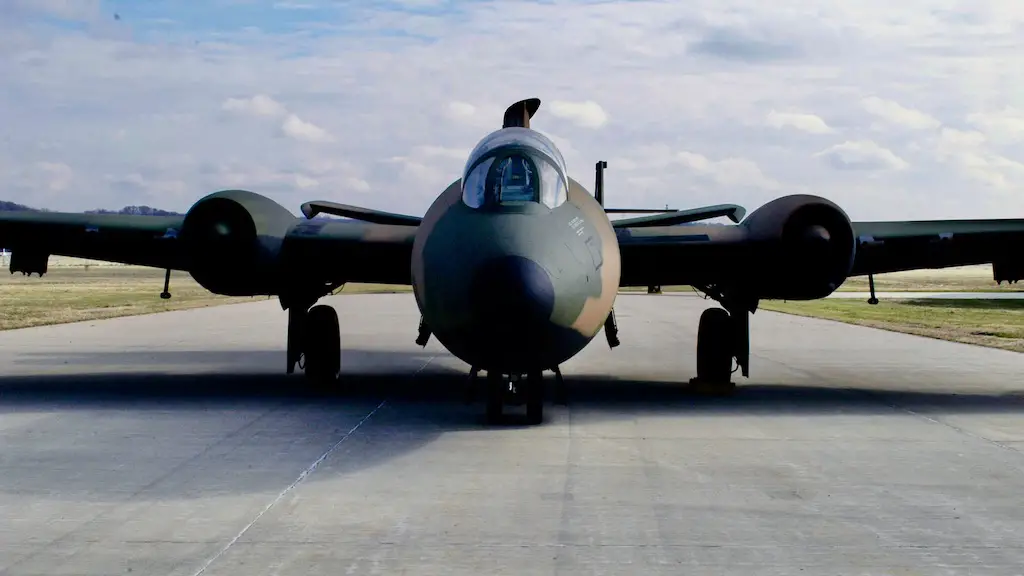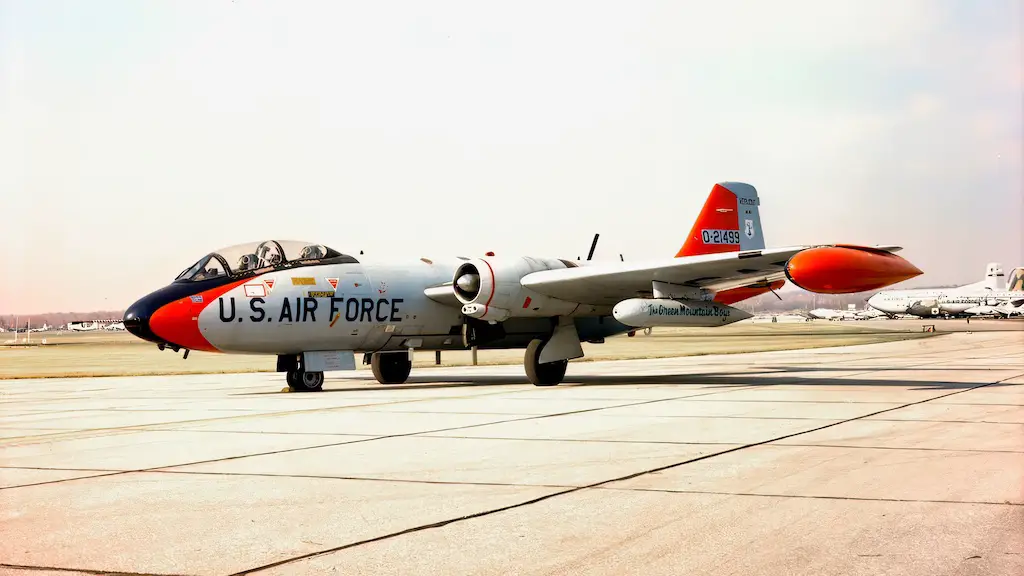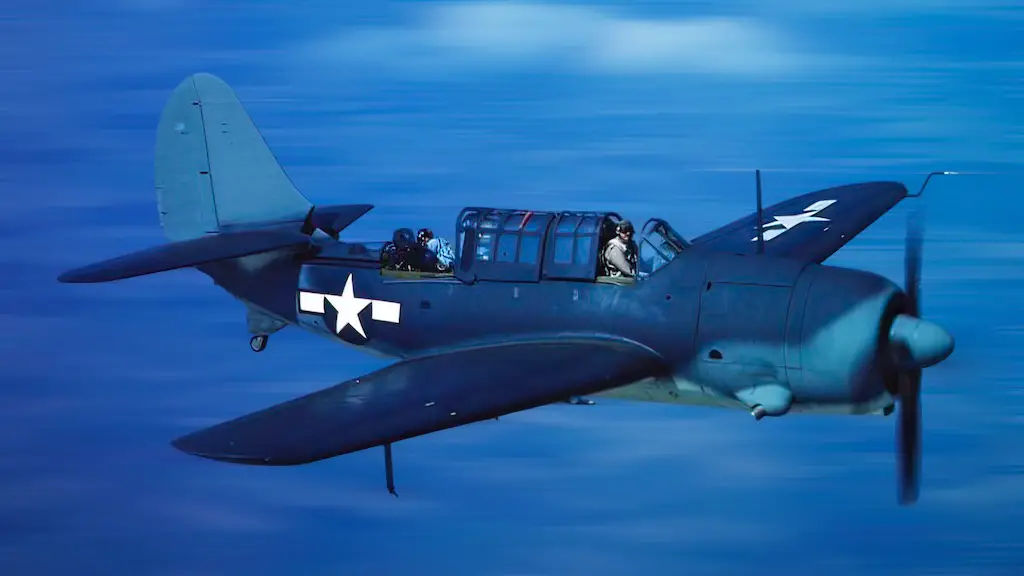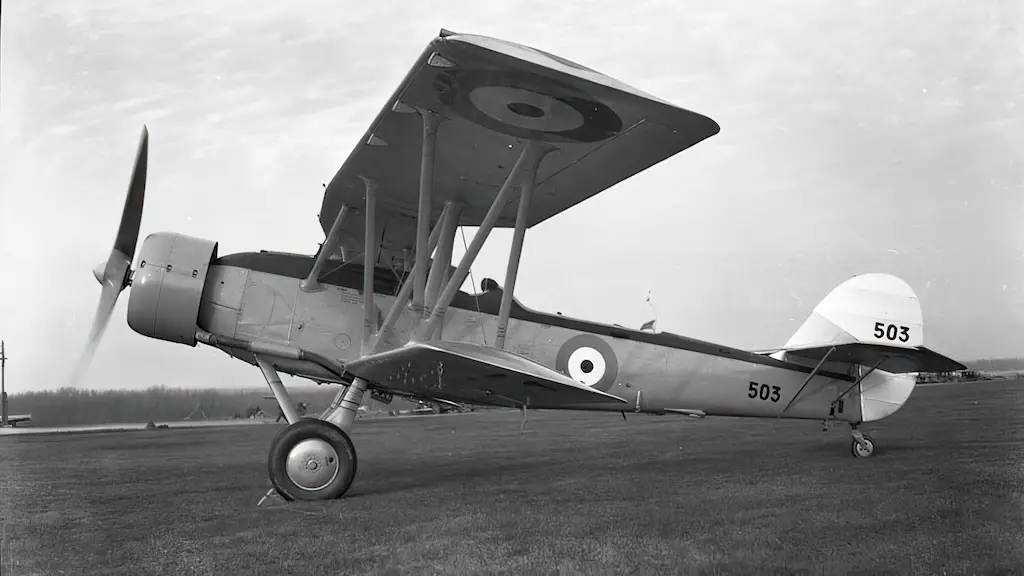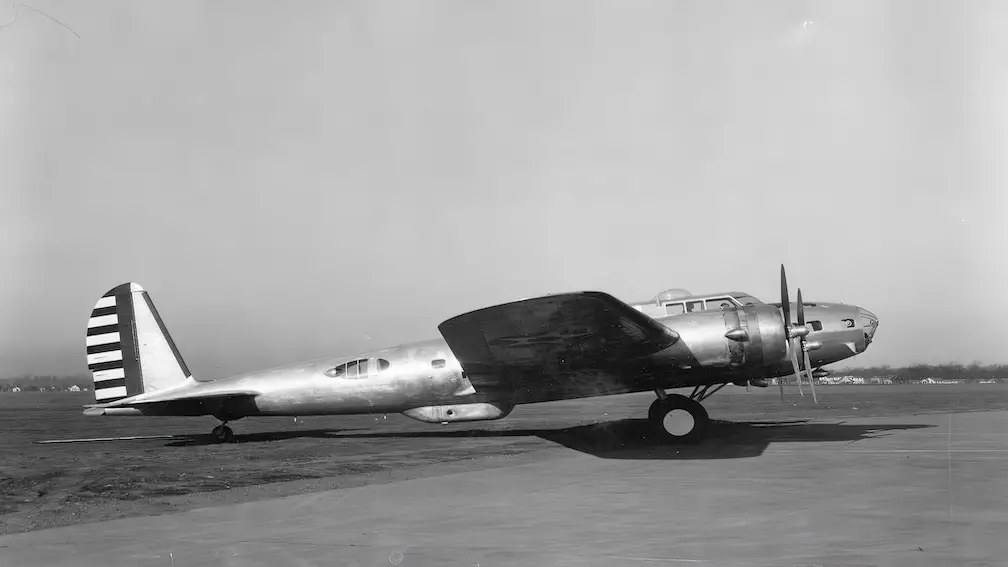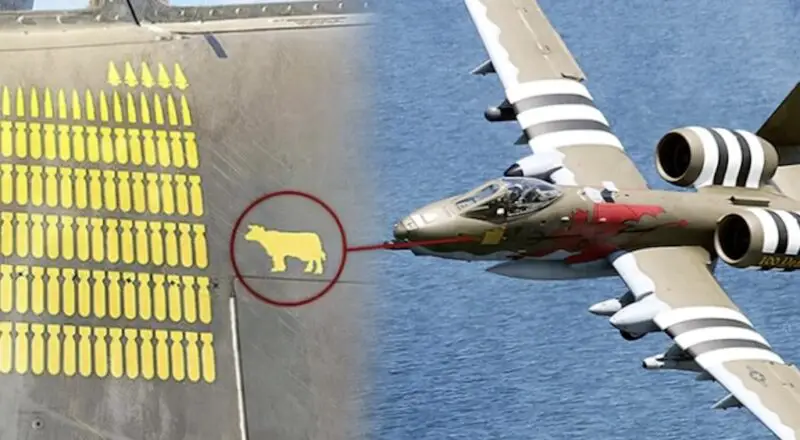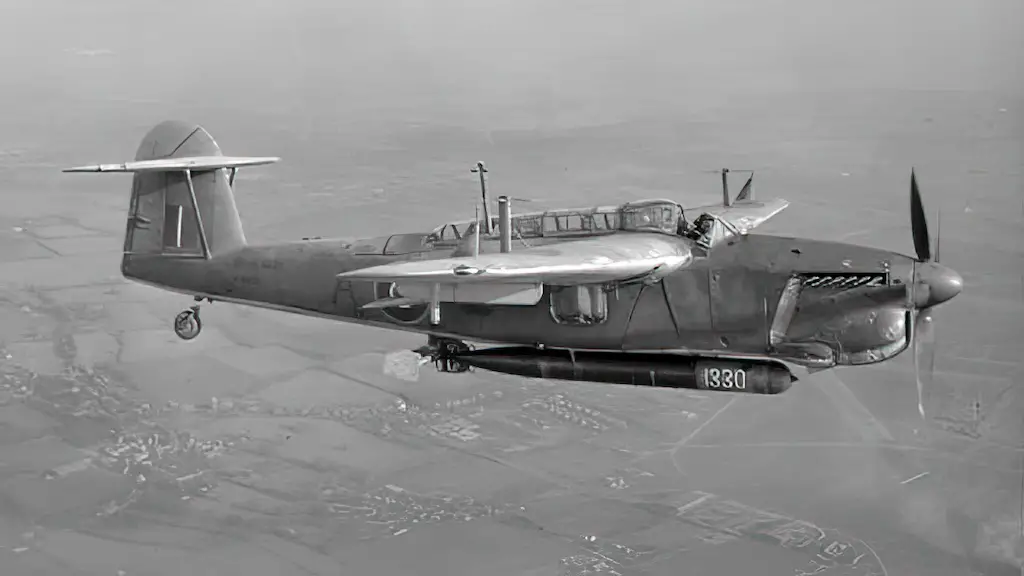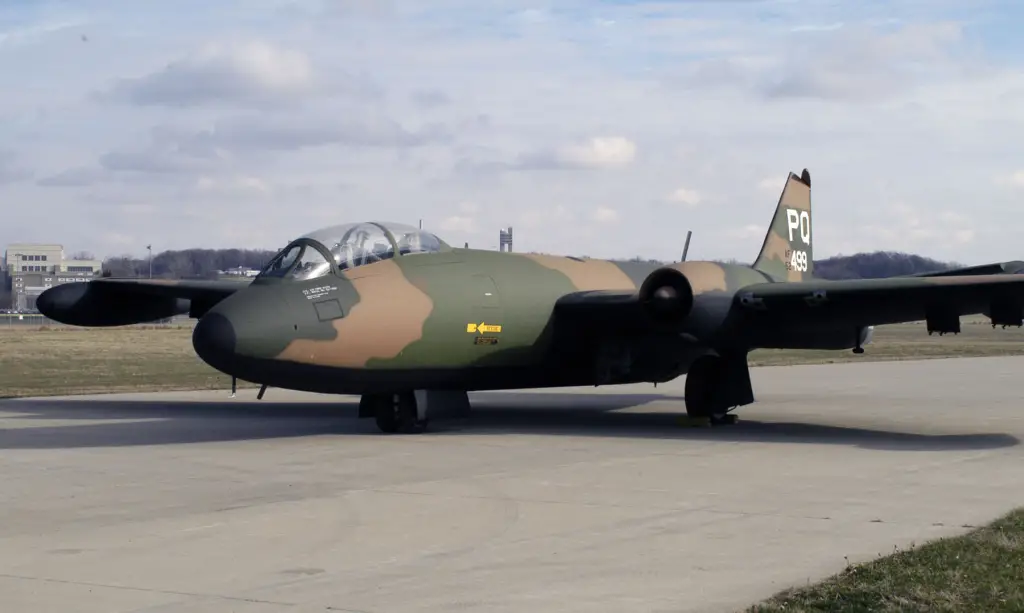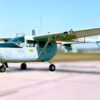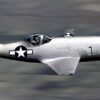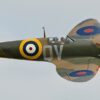Birth of a Battle Bird
A tale of transatlantic aviation cooperation, the B-57 Canberra’s story begins on the shores of Britain. Conceived by English Electric during the tumultuous years of World War II, the Canberra took to the skies for the first time in 1949. Intriguingly, it was in 1951 that the United States made an unprecedented move, deciding to license a foreign combat aircraft for domestic production — a practice not seen since the days of World War I.
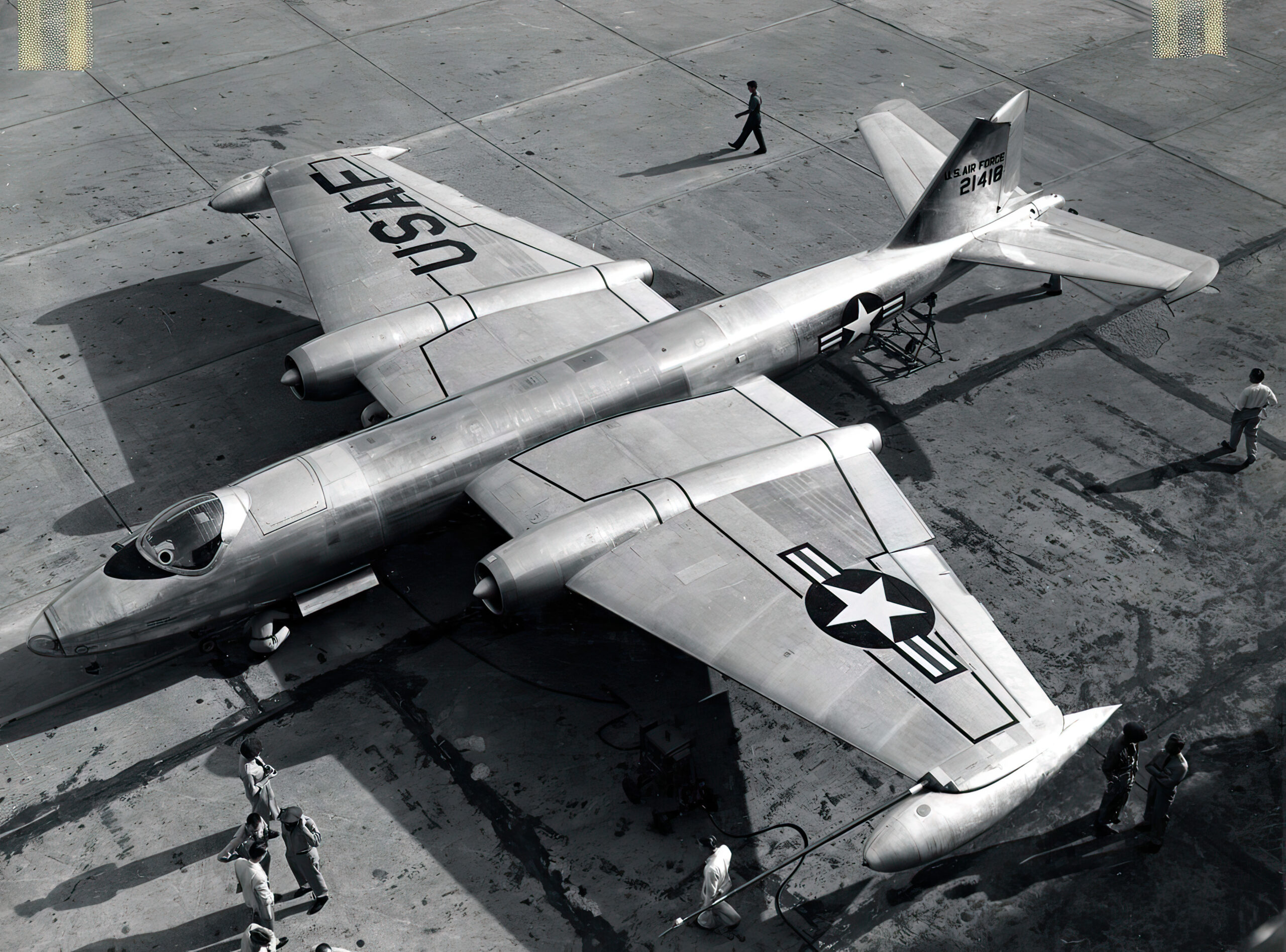
From English to American
The task of redesigning the Canberra for American use fell into the capable hands of the Martin Company in Baltimore, Maryland, resulting in the creation of the B-57. The twin-engine jet bomber was a marvel of mid-century engineering, with two potent Wright J65 engines delivering 7200 lbs of thrust each, propelling the aircraft to high altitudes at an impressive pace.
Sporting a large wing surface area, the B-57 cut a distinctive figure against the skies. Its wings provided the capability for high-altitude flying but posed challenges when maneuvering at lower levels and high speeds. Pilots also grappled with limited visibility during take-off and landing, further adding to the bird’s reputation as a demanding beast to master.
Trial by Fire: Canberra in Combat
The B-57 first tasted the intensity of battle during the frosty years of the Cold War, most prominently during the Vietnam War. Despite initial shortcomings, it evolved into an effective tool for nighttime bombing operations, earning the moniker “Night Intruder.”
The Canberra’s value lay in its advanced electronics, which facilitated precision bombings and reconnaissance missions. It played crucial roles in Operation Rolling Thunder and Operation Arc Light, disrupting enemy supply lines and troop movements. The aircraft’s adaptability was evident in the various modified versions, like the EB-57 electronic warfare variant and the RB-57 high-altitude reconnaissance model.
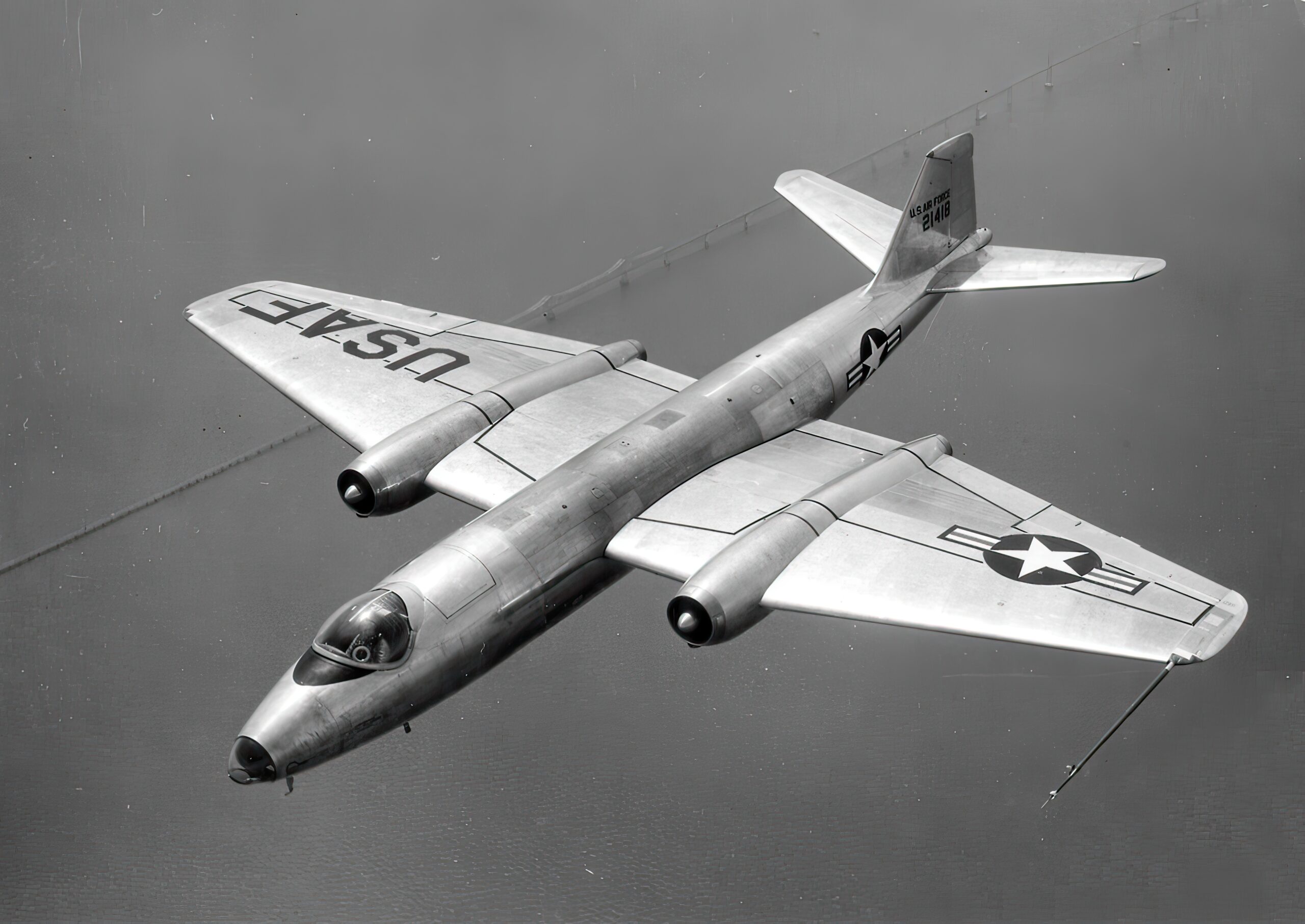
The Canberra’s Swan Song and Legacy
The last active B-57s bowed out from Air National Guard service in 1983, closing the curtains on more than thirty years of dedicated service. However, the Canberra’s story didn’t end there. NASA continued to employ three modified WB-57F aircraft for high-altitude research and reconnaissance missions, with the latest reported flight as recent as 2019.
NASA’s WB-57F Canberras are unique machines, having been extensively modified to meet the stringent requirements of scientific research. The wings were significantly lengthened, and the engines replaced with more efficient models, enabling the aircraft to reach altitudes of over 60,000 feet – an essential capability for atmospheric research.
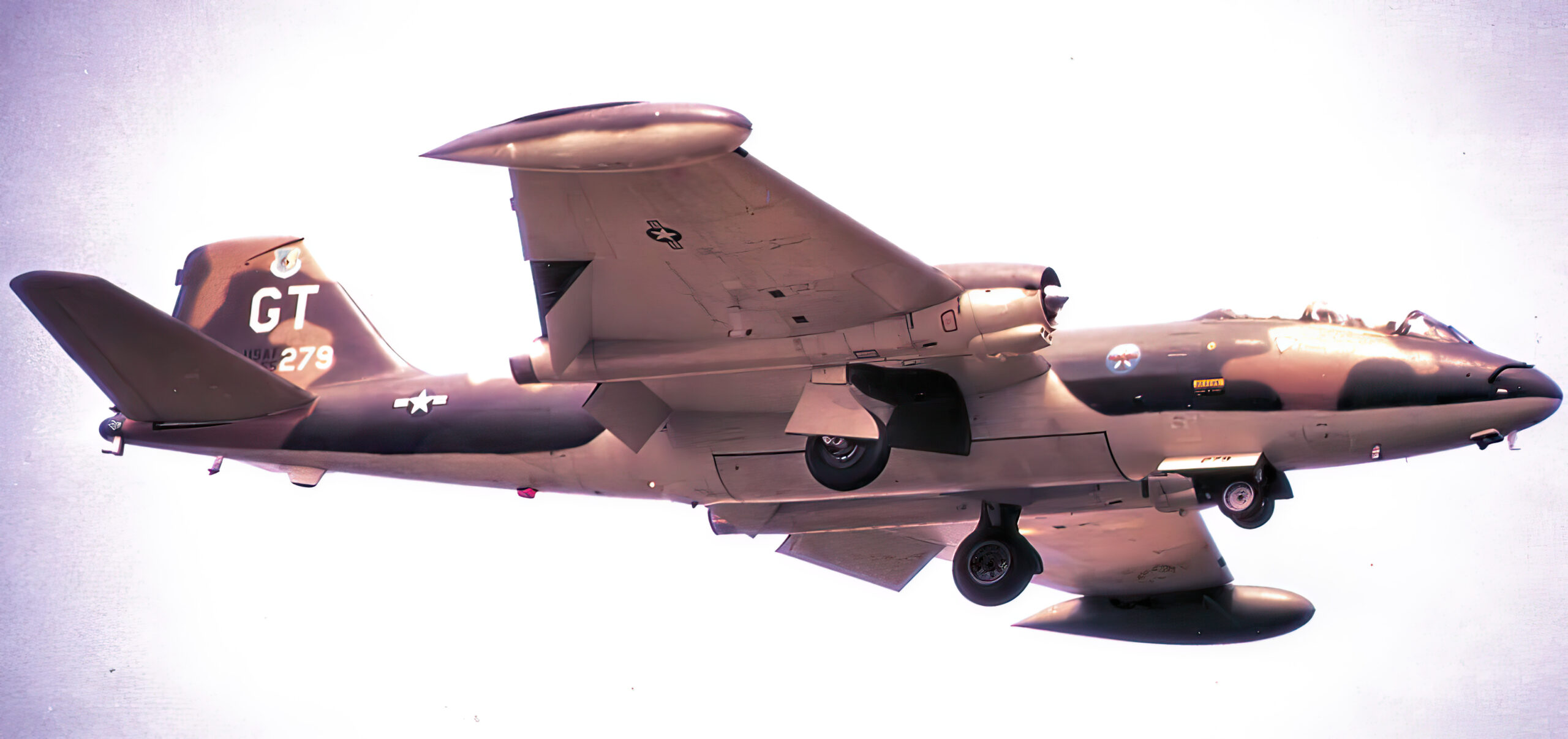
These Canberras have been involved in an array of scientific studies, such as capturing high-resolution imagery, monitoring weather patterns, and studying cosmic dust. Notably, they were instrumental in studying the 2017 solar eclipse, providing data that helped scientists understand the sun’s corona and its impact on Earth’s atmosphere.
The legacy of the B-57 Canberra stands as an enduring symbol of global cooperation and the pioneering essence of aviation engineering. Its initial hurdles didn’t deter it from cementing its status in the illustrious history of military aviation. While it may not have shared the limelight with some of its counterparts, there’s no denying the Canberra’s remarkable versatility and reliability. As a cornerstone of the Cold War aviation arsenal, its influence was significant and far-reaching. Reflecting on the Canberra’s journey, it serves as a rich resource for understanding the progression of aircraft design, the refinement of wartime tactics, and the unyielding advancement of technology.
